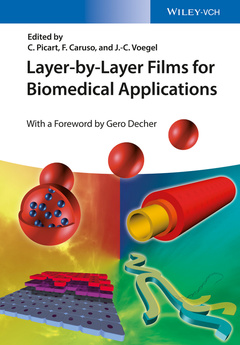Description
Layer-by-Layer Films for Biomedical Applications
Authors: Picart Catherine, Caruso Frank, Voegel Jean-Claude
Prefaced by: Decher Gero
Language: English
Subjects for Layer-by-Layer Films for Biomedical Applications:
Approximative price 205.52 €
In Print (Delivery period: 12 days).
Add to cart592 p. · 17.7x25 cm · Hardback
Description
/li>Contents
/li>Biography
/li>
The book gives a thorough overview of applications of the layer-by-layer (LbL) technique in the context of bioengineering and biomedical engineering where the last years have witnessed tremendous progress. The first part familiarizes the reader with the specifics of cell-film interactions that need to be taken into account for a successful application of the LbL method in biological environments. The second part focuses on LbL-derived small drug delivery systems and antibacterial agents, and the third part covers nano- and microcapsules as drug carriers and biosensors. The fourth and last part focuses on larger-scale biomedical applications of the LbL method such as engineered tissues and implant coatings.
Frank Caruso is a Professor in the Department of Chemical and Biomolecular Engineering at the University of Melbourne, Australia. He was awarded an Australian Research Council Laureate Fellowship 2012 for recognition of his significant leadership and mentoring role in building Australia's internationally competitive research capacity. He has published over 350 peer-reviewed papers and is on ISI's most highly cited list, ranking in the top 20 worldwide in materials science in 2011. Frank Caruso is also included in Thomson Reuters' 2014 World's Most influential scientific minds. He was elected a Fellow of the Australian Academy of Science in 2009. Prof. Caruso is also the recipient of the inaugural 2012 ACS Nano Lectureship Award (Asia/Pacific) from the American Chemical Society for global impact in nanoscience and nanotechnology, t




